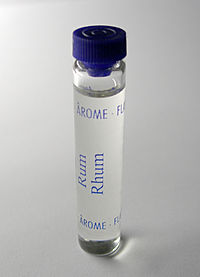
Photo from wikipedia
This study sought to reveal the mechanism of flavor generation when pomegranate seeds are processed, as well as the contribution of volatile organic components (VOCs) to flavor formation. Gas chromatography–ion… Click to show full abstract
This study sought to reveal the mechanism of flavor generation when pomegranate seeds are processed, as well as the contribution of volatile organic components (VOCs) to flavor formation. Gas chromatography–ion mobility spectrometry (GC-IMS), combined with relative odor activity (ROAV) and statistical methods, was used for the analysis. The results showed that 54 compounds were identified from 70 peaks that appeared in the GC-IMS spectrum. Then, the ROAV results showed 17 key volatile components in processing pomegranate seeds, and 7 flavor components with large differential contributions were screened out using statistical methods. These included γ-butyrolactone, (E)-3-penten-2-one (dimer), pentanal, 1-propanethiol, octanal, and ethyl valerate (monomer). It is suggested that lipid oxidation and the Maillard reaction may be the main mechanisms of flavor formation during the processing of pomegranate seeds. Furthermore, this study lays the experimental and theoretical foundations for further research on the development of flavor products from pomegranate seeds.
Journal Title: Molecules
Year Published: 2023
Link to full text (if available)
Share on Social Media: Sign Up to like & get
recommendations!